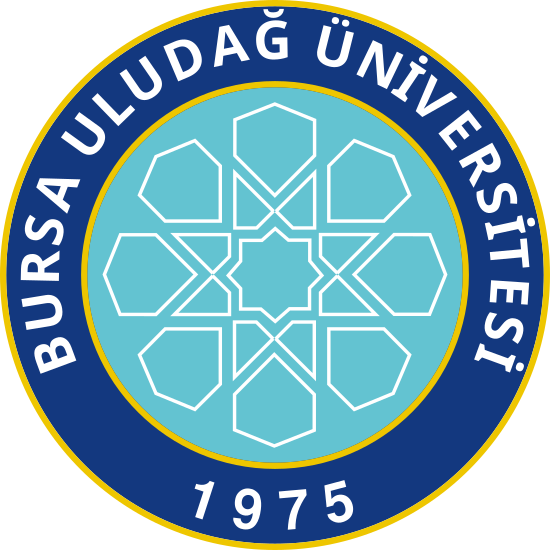Please use this identifier to cite or link to this item:
http://hdl.handle.net/11452/32274Full metadata record
| DC Field | Value | Language |
|---|---|---|
| dc.contributor.advisor | Aydın, Hakan | - |
| dc.contributor.author | Korkut, Hasan | - |
| dc.date.accessioned | 2023-04-10T07:56:50Z | - |
| dc.date.available | 2023-04-10T07:56:50Z | - |
| dc.date.issued | 2023 | - |
| dc.identifier.citation | Korkut, H. (2023). Uçak kanadı tasarımı, analizi ve yapı elemanlarının topoloji optimizasyonu. Yayınlanmamış yüksek lisans tezi. Bursa Uludağ Üniversitesi Fen Bilimleri Enstitüsü. | tr_TR |
| dc.identifier.uri | http://hdl.handle.net/11452/32274 | - |
| dc.description.abstract | Havacılık ve uzay endüstrisinde bir yapısal parçanın nihai ürüne dönüşebilmesi için birçok disiplin birbirleriyle iletişim halinde ve birbirlerinin çalışmalarına girdi sağlayarak çalışırlar. Özellikle yük grubu, tasarım grubu ve analiz grubu bu şekilde çalışırlar. Bu guruplar parçayı nihai haline getirebilmek için birçok basamak takip ederler. En önemli basamaklardan biri konsept tasarım aşamasıdır. Bu aşama da özellikle bazı tasarım değişikliklerine karar verebilmek adına tasarım ve analiz ekibi birbirleriyle çok fazla iletişim halinde olurlar ve sürekli farklı konseptler üzerinde çalışılır. Optimum konsept tasarım bulunduğu taktirde artık detay çalışmalar başlatılır. Konsept tasarım sürecinde özellikle havacılık sektöründe en dikkat edilen unsur parçanın en hafif şekilde görevini yerine getirebilmesidir. Bunu en tutarlı ve kısa zamanda yapabilmek projeye oldukça avantaj sağlamaktadır. Günümüzde yapısal parçaları daha hafif tasarlamak için farklı yöntemler kullanılmaktadır. Bunlara malzemenin değiştirilmesi, parça geometrisinin değiştirilmesi veya üretim yönteminin değiştirilmesi gibi örnekler verilebilir. Bu değişikliklerden bazısı çok zaman ve maliyet gerektirirken, bazısı daha pratik yöntemlerdir. Bu çalışmada uçak kanat tasarımı CATIA kullanılarak yapılmış ve bu tasarımda hafifletme için yapılacak geometrik değişikliklere HYPERMESH topoloji optimizasyonu yetenekleri kullanılarak birçok iterasyon uygulanıp karar verilmiştir. Bu iterasyonlar sonucunda uçak kanadı tasarımının en hafif ve en mukavim hali ortaya çıkmıştır. Optimizasyon sonucunda ortaya çıkan kanat geometrisi yapısal olarak analiz edilip yapının gerekli mukavemeti kontrol edilmiştir. Gereken malzeme müsaade edilebilir tasarım değerlerine uygun sonuçlar elde edilmiştir. Bunun yanında geometrinin bütünlüğünü sağlayan bağlantı elemanlarının statik hesaplamaları da yapılmıştır. Yapılan çalışmalar da malzeme olarak alüminyum seçilmiştir. Nihai tasarıma ulaştırılan alüminyum kanadın yanı sıra malzeme olarak kompozit kullanılan bir kanat yapısı da çalışılmış olup, farklılıklar karşılaştırılmıştır. | tr_TR |
| dc.description.abstract | In the aerospace industry, many disciplines work in communication with each other and provide input to each other's work so that a structural part can be transformed into a final product. In particular, the load group, design group, and analysis group work this way. These groups follow many steps to finalize the piece. One of the most important steps is the concept design phase. At this stage, especially in order to decide on some design changes, the design and analysis team communicate with each other a lot and different concepts are constantly worked on. Once the optimum concept design is found, detailed studies are started. The most important element in the concept design process, especially in the aviation industry, is that the part can fulfill its task in the lightest way. Being able to do this in the most consistent and short time provides a great advantage to the project. Today, different methods are used to design structural parts lighter. Examples of these are changing the material, changing the part geometry, or changing the manufacturing method. Some of these changes require a lot of time and cost, while others are more practical. In this study, the aircraft wing design was made using CATIA, and many iterations were applied using HYPERMESH topology optimization capabilities to decide on the geometric changes to be made for lightening in this design. As a result of these iterations, the lightest and most durable version of the aircraft wing design has emerged. The wing-geometry resulting from the optimization was analyzed structurally and the required strength of the structure was checked. The results were obtained in accordance with the required material permissible design values. In addition, static calculations of the fasteners that ensure the integrity of the geometry were also made. In the studies carried out, aluminum was chosen as the material. In addition to the aluminum wing, which was reached to the final design, a wing structure using composite material was also studied and the differences were compared. | en_US |
| dc.format.extent | XIV, 54 sayfa | tr_TR |
| dc.language.iso | tr | tr_TR |
| dc.publisher | Bursa Uludağ Üniversitesi | tr_TR |
| dc.rights | info:eu-repo/semantics/openAccess | en_US |
| dc.rights | Atıf 4.0 Uluslararası | tr_TR |
| dc.rights.uri | http://creativecommons.org/licenses/by/4.0/ | * |
| dc.subject | Uçak kanadı | tr_TR |
| dc.subject | Kiriş | tr_TR |
| dc.subject | Tasarım | tr_TR |
| dc.subject | Analiz | tr_TR |
| dc.subject | Topoloji optimizasyonu | tr_TR |
| dc.subject | Sonlu elemanlar metodu | tr_TR |
| dc.subject | Airplane wing | en_US |
| dc.subject | Spar | en_US |
| dc.subject | Design | en_US |
| dc.subject | Analysis | en_US |
| dc.subject | Topology optimization | en_US |
| dc.subject | Finite element metod | en_US |
| dc.title | Uçak kanadı tasarımı, analizi ve yapı elemanlarının topoloji optimizasyonu | tr_TR |
| dc.title.alternative | Airplane wing design, analysis and topology optimization of components | en_US |
| dc.type | masterThesis | en_US |
| dc.relation.publicationcategory | Tez | tr_TR |
| dc.contributor.department | Bursa Uludağ Üniversitesi/Fen Bilimleri Enstitüsü/Makine Mühendisliği Anabilim Dalı. | tr_TR |
| dc.contributor.orcid | 0000-0002-5659-2629 | tr_TR |
| Appears in Collections: | Fen Bilimleri Yüksek Lisans Tezleri / Master Degree | |
Files in This Item:
| File | Description | Size | Format | |
|---|---|---|---|---|
| Hasan_Korkut.pdf | 1.86 MB | Adobe PDF |  View/Open |
This item is licensed under a Creative Commons License

